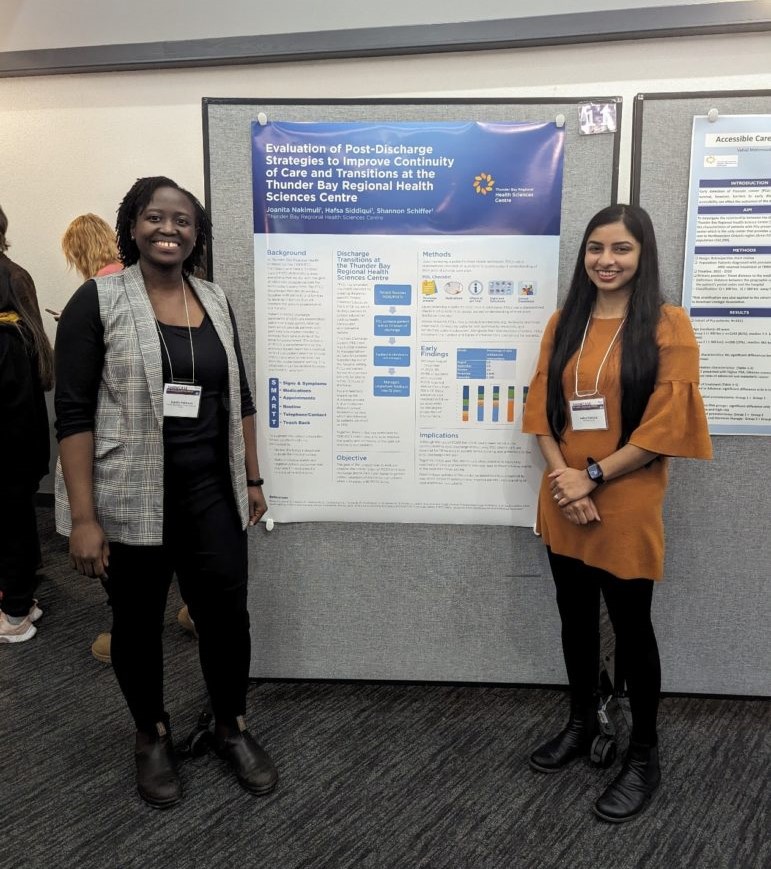Patient and Family Centred Care at Applied Health Research Showcase
by Raiili Pellizzari
 PFCC’s Joanita Nakimuli (Discharge Transition Lead) and Hafsa Siddiqui (Data Specialist).
PFCC’s Joanita Nakimuli (Discharge Transition Lead) and Hafsa Siddiqui (Data Specialist).At Thunder Bay Regional Health Sciences Centre (TBRHSC), the Patient and Family Centred Care (PFCC) philosophy guides everything that we do, with the goal of delivering exceptional care for every patient every time.
The PFCC department is continuously evaluating strategies to improve continuity of care and transitions for patients leaving the hospital setting. These strategies include the use of patient-oriented discharge summaries (PODS) and patient-oriented education tools (POETs) which provide patients with pertinent discharge instructions and address barriers to patient education such as health literacy and environmental factors. Additionally, the Post-Discharge Liaison (PDL) role was created to manage follow-up care for patients transitioning out of the hospital setting. PDLs are trained nurses who contact patients by phone within 72 hours of discharge. Lastly, patient feedback regarding the discharge process is also monitored through patient experience surveys, which are delivered to patients via email or SMS. Feedback is then provided to unit managers to implement changes in their Quality Improvement plans.
On February 9, 2024, PFCC’s Joanita Nakimuli (Discharge Transition Lead) and Hafsa Siddiqui (Data Specialist) had the pleasure of presenting the impact of these strategies at the SJCG Centre for Applied Health Research Showcase. Preliminary findings show that, although the use of PODS has traditionally been relied on for communicating post-discharge instructions, PDL phone calls are essential for filling gaps in patient understanding and adherence to the post-discharge care plan. For example, between August – December of 2023, 98-99.8% of patients who received PODS /POETs required interventions from PDLs. Of these, education and medication follow-up accounted for the largest proportion of interventions.
Together, PODS/POETs and PDL phone calls show promise in improving continuity of care and transitions for patients visiting TBRHSC and may lead to fewer adverse events in the post-discharge setting.